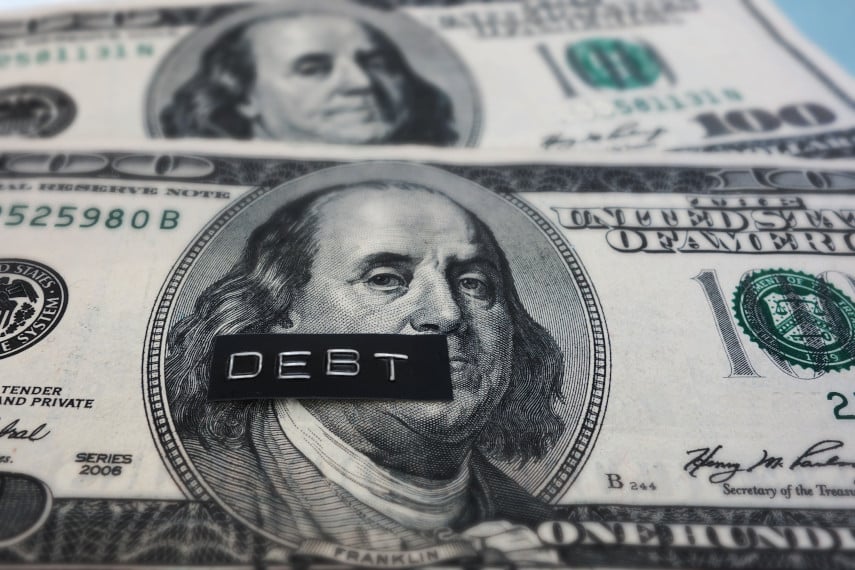
Last week rating agency Fitch downgraded the US government’s debt rating from AAA to AA+. It was an unexpected move, and caused ripples in the market. But markets seem to have shrugged off the move and moved on.
Is the US debt downgrade not something we have to worry about? Or is it something that could impact your finances in ways you don’t expect? Here are three ways the US debt downgrade could impact your finances.
1. Higher Interest Rates
One aspect that will likely be immediate is that interest rates throughout the economy could end up increasing as a result of this downgrade. While AA+ is still a high credit rating, it’s not the near risk-free AAA rating that so many investors covet.
S&P downgraded US debt from AAA to AA+ in 2011, which was arguably a more shocking downgrade as it was the first rating agency to do so. Moody’s still has the US government rated at Aaa.
Fitch’s rating downgrade was unexpected, so it might take a while for the impact to show up within the economy. But with the “risk-free” Treasury bond yields on which many other interest rates are based potentially rising as a result of the downgrade, rates on mortgages, credit cards, and auto loans could end up rising.
2. Higher Tax Burden
While the debt downgrade means that the government could end up paying more in interest cost on servicing the national debt, the government isn’t going to eat that cost. It can really do only a handful of things.
First, the government could issue more debt to service the increase in interest cost. But this is a Sisyphean cycle that never ends. So instead, the government may first resort to increasing taxes in order to help offset the increase in debt servicing costs.
While we’ve heard a lot of rhetoric from the Biden administration about how the rich need to pay their fair share, it seems as though the middle class is just as much in the administration’s crosshairs. The $600 threshold for 1099s, for example, will impact thousands, if not millions, of solidly middle class Americans. And any attempt to raise taxes to offset higher interest cost could also impact the middle class with higher taxes.
3. Growing Inflation
Of course, the government could also resort to its old standby of inflation in order to offset the rising cost of servicing debt. This is essentially what would result if the government were to issue debt to pay for the rising interest costs on the national debt. The government would issue new debt, that debt would be monetized, the money supply would rise, prices would rise as a result, and the government would be able to repay its debt in devalued dollars.
While that benefits the government somewhat, it is of no benefit to the rest of us who then have to deal with the effects of inflation: rising prices for food, housing, energy, and healthcare. But that’s the price we pay for a government that can’t keep its spending in check. The more the government spends, the large the national debt grows, and the more expensive it becomes to service that debt, the larger the threat of inflation becomes.
Is the Dollar Done For?
There’s also the problem that debt downgrades reduce demand for US Treasury debt from institutions and foreign nations. While default seems unlikely, lower credit ratings deter investors from buying as much debt as they might otherwise. And for financial institutions that have to keep minimum amounts of high quality capital on hand, downgrades to the US government’s credit rating could eventually impact the use of Treasury securities for purposes of maintaining capital.
In its downgrade notice, Fitch pointed out numerous problems that could continue to weigh on Treasury securities’ ratings in the future. These include rising budget deficits, rising debt levels, and the fact that there are numerous spending issues that remain unaddressed.
Debt service is one of those issues, with the cost of servicing the national debt expected to rise to 3.6% of GDP by 2033. Mandatory spending continues to rise and spending on Social Security and Medicare will continue to weigh on the government as the trust funds are depleted and the population ages.
Finally, the Trump tax cuts are set to expire in 2025, and the resulting tax increases could be a doozy for many middle class families. Political pressure to keep the cuts in place could result in a permanent fix, particularly if the economy is in recession by then, but that would also negatively impact the government’s projected tax receipts and lead to even greater budget deficits.
Protecting Yourself With Gold
To say that the US government’s fiscal position isn’t good is an understatement. Government spending continues to increase, the national debt has ballooned in recent years, and no one in Washington seems serious about changing course. Everyone wants to kick the can down the road, but at some point that has to stop. And when it does, the consequences could be dire.
People who see what’s going on today and who see the long-term consequences of this fiscal irresponsibility want to protect themselves and their finances against the negative impacts of a US government debt default or a collapse in the value of the dollar. They understand that the government can’t continue on this path forever, and when it finally has to pay the piper, the collateral damage could affect millions of Americans.
That’s why so many Americans today are looking to gold to help protect themselves. They understand gold’s importance as a safe haven and a store of value, and they’re looking to own gold as a hedge against financial turmoil and economic uncertainty.
With a gold IRA, many people are able to protect their retirement savings through purchasing physical gold coins or gold bars. A gold IRA allows you to make a tax-free rollover or transfer of assets from your existing 401(k), 403(b), TSP, IRA, or similar accounts so that you can use those assets to purchase gold. That allows you to benefit from the protection offered by gold, while still enjoying the same tax advantages as any other IRA account.
If you’re worried that the federal government’s reckless spending and fiscal irresponsibility is a threat to your finances, maybe it’s time to start thinking about how gold can play a role in protecting you. Call the experts at Goldco today to learn more about how gold can help safeguard your savings.





